The village of Onna in Okinawa Prefecture is a leading producer of atemoya, boasting the highest yield in Japan. In this issue, we visited Kazue Teruya of Teruteru Farm, a JAS-certified organic farm that grows atemoya naturally.
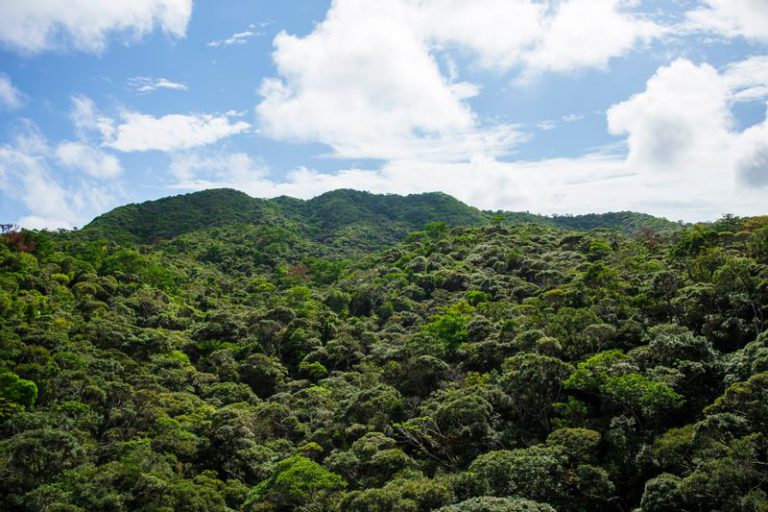
Atemoya is a hybrid of two fruits, the custard apple (Annonaceae), popular in Taiwan, and the cherimoya, also from the custard apple family and native to the Andes Mountains. It has a unique appearance, with a knobby green rind formed like a combination of the two.
Although a subtropical fruit, it is also hardy to cold, whereas too high a temperature may prevent the sugar content from rising. Therefore, the growing season is in the cooler months of autumn and winter after pollination in summer. Atemoya slowly matures into a large and sweet fruit over a period of about four months. Atemoya’s shipment period is set from December 1 to the end of April, with January being the tastiest season.
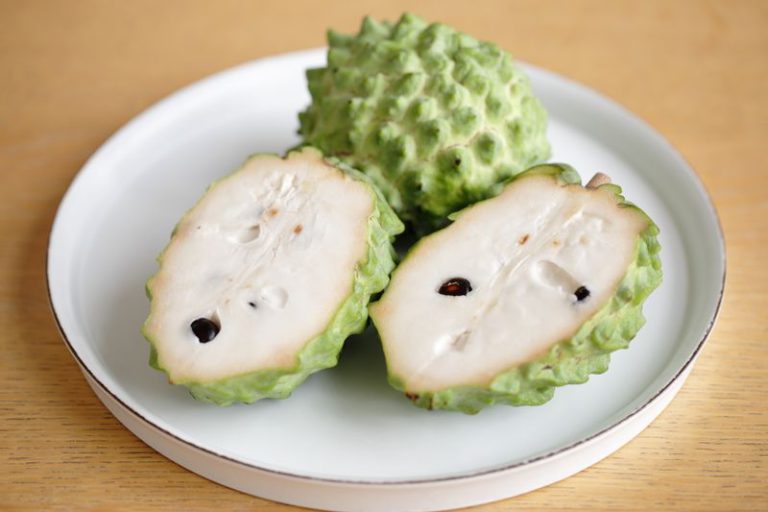
The fruit is regarded as “the ice cream of the forest” due to its flavor and texture. Its milky-white flesh has a soft and creamy texture and is so sweet that its sugar content sometimes exceeds 25 Brix. Though low in calories, it is also rich in vitamins and minerals, making it nutritious. The volume of shipments is still small, but it is currently enjoying popularity as a gift.
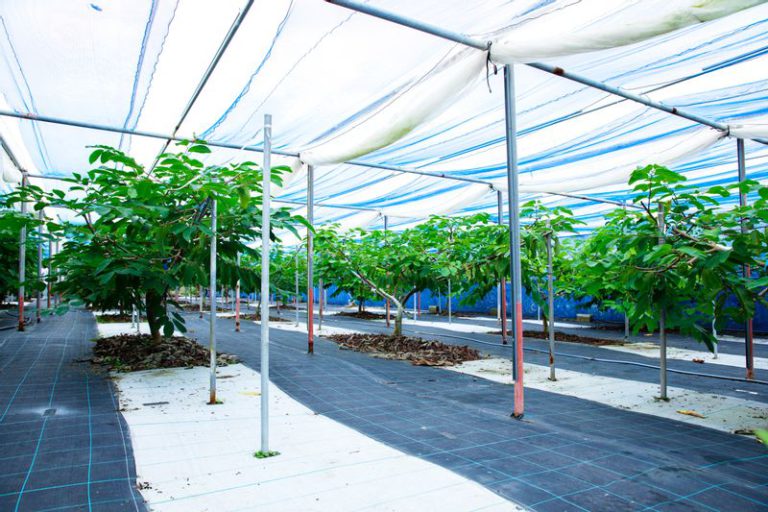
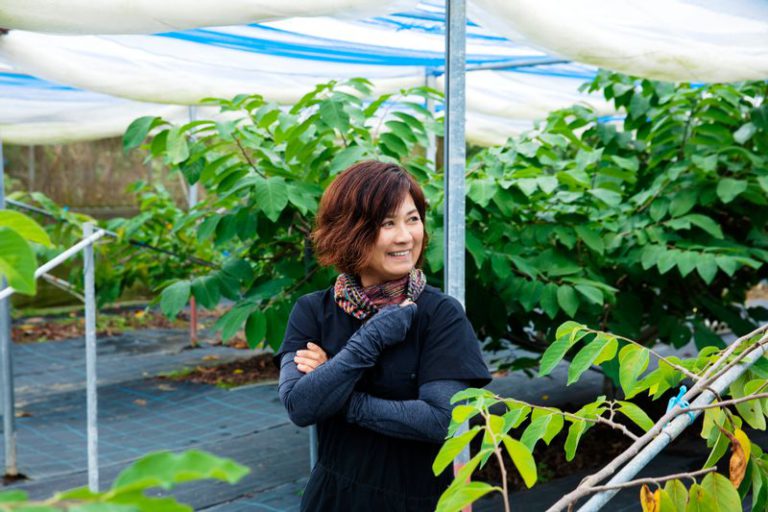
She further explains, “For example, even among stink bugs, the most common pest, a species called the eocanthecona furcellata, is a friend because it preys on caterpillars that feed on leaves and fruits. Oh, and that praying mantis over there is also a friend. Can you see it hiding and preying on the insects that come close to the flowers?” She is so committed that she even breeds the insects at home to study their species and characteristics. It is a farming method unique to this woman who loves plants, flowers and other critters.
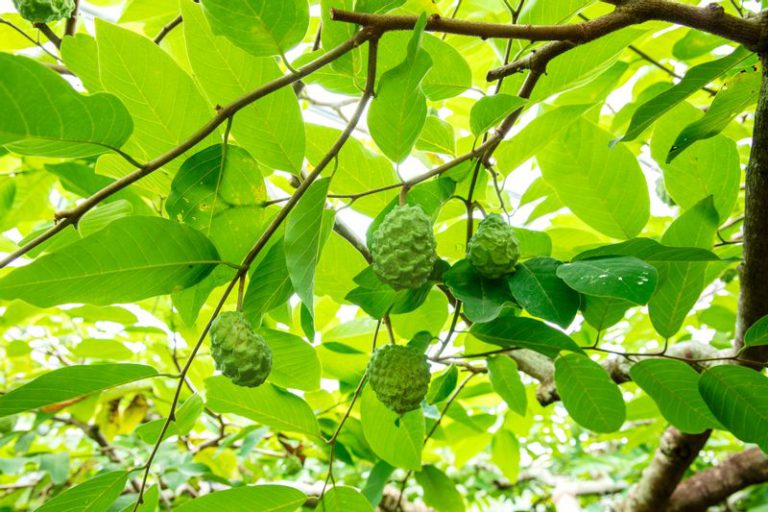
It is hard to determine when to harvest atemoya because it does not clearly change in appearance as it matures. Therefore, Teruya sets the pollination period at 20 days to eliminate the inconsistency in harvest time to improve her fruit’s quality. It is also important to pick the fruit in the autumn because excessive fruiting will consume so much energy, killing the tree the following year. The farm cultivates the trees to produce the right amount of large fruits by carefully pruning them so that there is one fruit and about 16 leaves per branch.
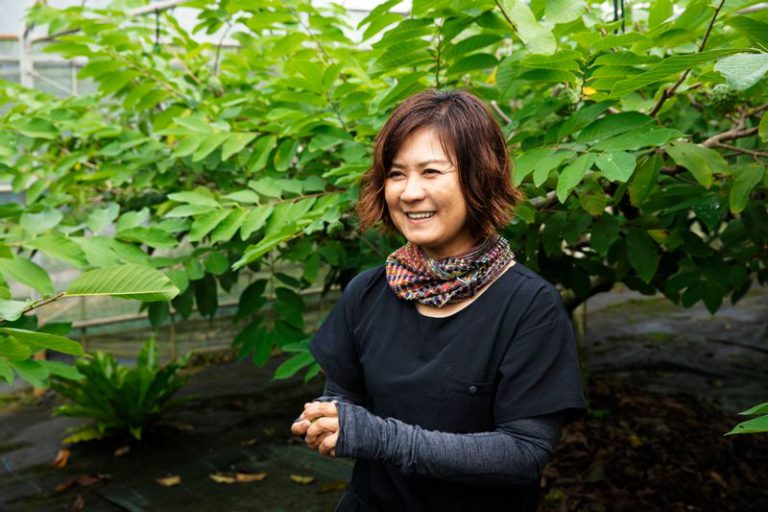
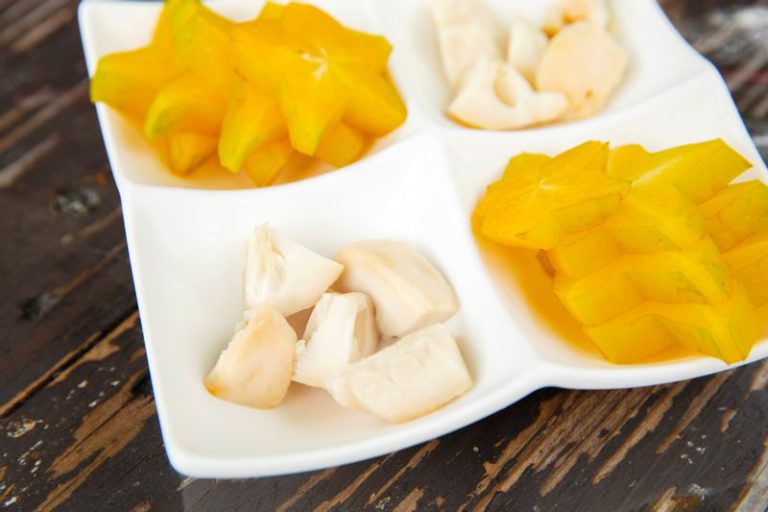
Atemoya is tastiest when eaten as is, but the creamy fruit also goes exceedingly well with smoothies and yogurt. The best time to eat is when the rind has softened a little after purchase. A refreshing sweetness akin to a ripe La France pear spread in the mouth when we tried one. We can look forward to the peak of the season in January, when the flesh will be softer and smoother, and the sugar content will be higher.
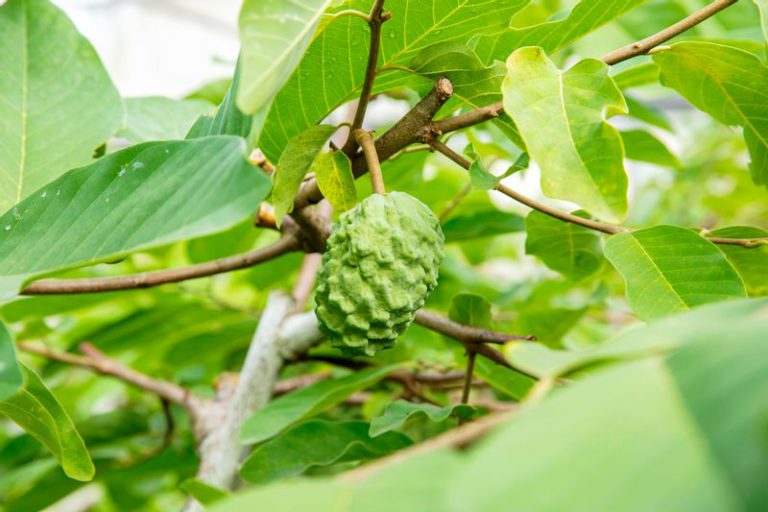
Teruya hopes to continue growing atemoya in symbiosis with nature. We encourage you to try atemoya grown in Onna this winter.









